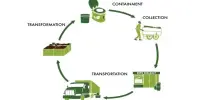Current policies for ensuring food security place a premium on farms, but forests also play an important role. According to researchers who discovered direct linkages between deforestation and decreasing fruit and vegetable consumption in rural Tanzania, forests can help populations that rely on wild foods vary their diets and meet their nutritional demands.
“In recent years, a growing body of literature has shown strong positive connections between forests and food security in low- and middle-income countries,” said Charlotte Hall, a postdoctoral fellow at the University of Copenhagen, Denmark, and lead author of the paper. “Our study is the first of its kind to find a causal relationship between deforestation and a reduction in people’s dietary quality.”
Over a five-year period, the researchers looked at the food intake of 1,256 households in rural Tanzania. For confidentiality reasons, the World Bank data was geo-referenced and randomly shifted by up to 3.11 miles, giving the researchers an estimated gauge of the families’ closeness to forested regions.
Over the study period, the team employed satellite photos and GIS datasets to measure forest cover.
Powell has spent her professional life collaborating with and learning from those who are interested in how agricultural systems may enhance diet quality and food security. She pointed out that prior research has attempted to quantify the influence of crop diversity or agricultural intervention on diet.
“The magnitude of impact that we see from agriculture on diet is less than what we see in this study,” said Powell. “So, this research really should push people to think beyond the field when trying to help rural communities improve food security in places where wild foods are important.”
According to Hall, the majority of policies aimed at enhancing food security in low to middle-income nations support expanded agricultural production, particularly staple crop development, which typically comes at the expense of forests. The new study’s findings hint to a different approach to increasing food security in these countries.
We focused on three key micronutrients in our study iron, zinc, and vitamin A because these are the most commonly deficient nutrients in low and middle-income countries. We did not find a link between forest loss and iron or zinc, but we found a strong link between forest loss and vitamin A.
Charlotte Hall
“While increased agricultural production will undoubtedly be important for meeting the food needs of a growing population, policymakers should give more consideration to the role of forests,” Hall said.
“This is particularly important given that micronutrient deficiencies affect far more people than undernourishment, and our study has shown that deforestation directly reduces people’s ability to source fruits and vegetables that are rich in important nutrients such as vitamin A. Ultimately, we recommend the preservation of forests, which may offer win-wins in terms of meeting both nutrition and environmental goals.”
The work was co-authored by Laura Vang Rasmussen and Rasmus Skov Olesen of the University of Copenhagen, Cecilie Dyngeland of the Inland Norway University of Applied Sciences, and Suhyun Jung of West Virginia University. The European Research Council financed this study.
According to Bronwen Powell, assistant professor of geography, African studies, and anthropology at Penn State and research co-author, wild food is an important part of rural Tanzanians’ diet, and the country has experienced considerable environmental change and deforestation in the last two decades. Powell has spent more than a decade conducting nutritional research in Tanzania, and her dissertation work aided in the development of the current study.
“The results of the study are startling,” Powell said. “We have this very clear signal in the data about fruit and vegetable consumption. Also, we have a strong understanding that fruit and vegetable consumption is associated with health outcomes. Low consumption of these foods is one of the leading causes of mortality globally. It’s right up there with risk factors like alcohol consumption and unsafe sex. If we can link deforestation to fruit and vegetable consumption, it’s very concerning.”
The greatest significant decrease in daily intake of leafy green vegetables, mangoes, and other fruit produce foraged from the forest or grown on trees was observed by the researchers. Vitamin A, an important micronutrient, is abundant in several foods.
“We focused on three key micronutrients in our study iron, zinc, and vitamin A because these are the most commonly deficient nutrients in low and middle-income countries,” said Hall. “We did not find a link between forest loss and iron or zinc, but we did find a strong link between forest loss and vitamin A.”
As a result of deforestation, the researchers discovered that household vitamin A adequacy dropped with time. According to Powell, vitamin A insufficiency has serious health consequences, including blindness, decreased immunological function, and respiratory tract infections.
The researchers discovered that as the amount of forest cover fell, so did the amount of fruit and vegetable consumption recorded. Over a five-year period, forest cover decreased by an average of 423 acres. Fruit and vegetable consumption fell by 14 grams, or half an ounce, per person per day, reflecting an 11 percent fall in daily consumption.
















